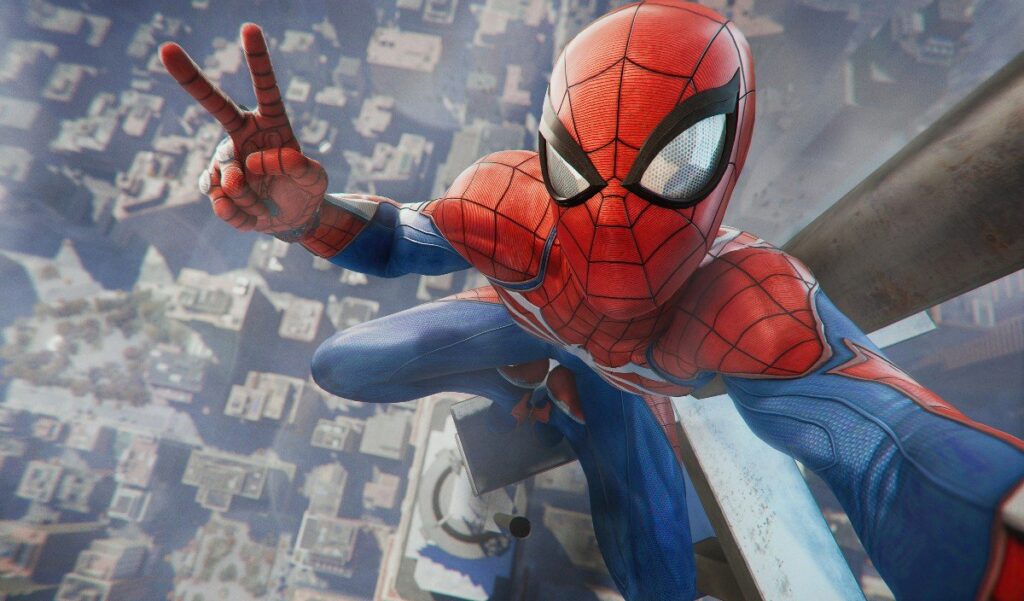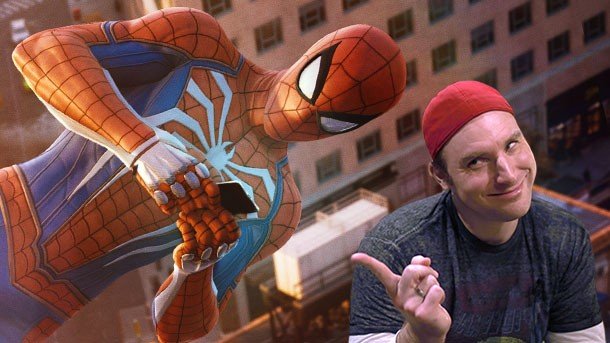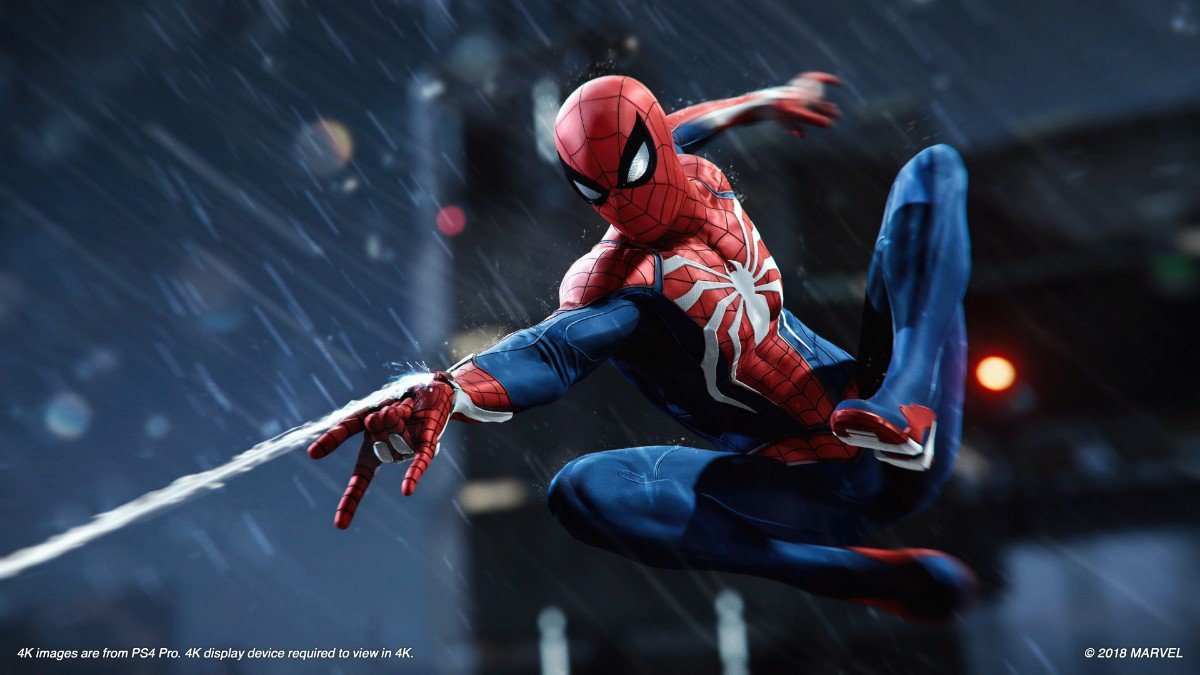
Spider-Man has been around since the early ‘60s and has sold more than 360 million comics. As of 2014, Hollywood Reporter noted that Spider-Man’s licensing revenues generated about $1.3 billion annually. There’s no denying that Spider-Man is in the pantheon of the greatest superheroes of all time. He remains as popular as ever with Marvel and Sony Pictures having just rebooted the film franchise and Ratchet & Clank developer Insomniac Games about to release a new video game on the PlayStation 4.
Spider-Man has seen a number of video game versions over the last few decades, but none were ever hyped as much as the upcoming title from Insomniac, which just went gold and is set to ship on September 7th. Insomniac is an independent triple-A developer, but Sony has been giving the studio’s PS4 exclusive the same kind of support and love as it would for first-party blockbusters like God of War. Spider-Man has been in the spotlight for two E3s in a row, is getting a special PS4 hardware bundle, and is expected to be among 2018’s top sellers despite being limited to one platform. There’s a whole lot of pressure riding on Insomniac’s shoulders, but it’s an opportunity that the team cherishes.
“Not to go down the responsibility road too much, but it does feel like a responsibility,” Lead Writer Jon Paquette told me, “not only with getting all that support, like you said from Sony, but we’re taking one of our most beloved heroes, Spider-Man, and we’re trying to create a new story for him. And there are so many fans out there [who see Spider-Man as] their favorite character, that we want to make sure we do it right.

“I put a lot of pressure on myself, and I know the team does as well, to do the best that we can to make sure this is the best Spider-Man game you’ve ever played.”
For Paquette, who previously wrote Sunset Overdrive and Resistance 3 for Insomniac and served for a time as Creative Director at EA on games like Medal of Honor, Spider-Man may be the title that’s put him and others on the team in the biggest spotlight yet.
“We’re getting probably the most press that we’ve ever gotten,” he affirmed, adding that he “freaked out” when he first heard Insomniac had landed the Spider-Man project.
“It’s a dream come true. And for all of us personally too,” Paquette continued. “It’s like, ‘Man, I can’t believe we’re actually making a Spider-Man game.’ It’s the kind of game we want to play. I do remember early on, when I was writing the first scene, which is just like a test scene to start working out the character and tone, I was at home and I was typing and I typed Spider-Man as a slug line, and I was like, ‘Oh my god! This is real! This isn’t fanfiction. We’re actually making something that will hopefully come to life.’ And now to see it come to life years later is crazy.”
If Paquette is feeling a mixture of excitement and anxiety, the emotions must be off the charts for Creative Director Bryan Intihar, who is directing his first-ever video game after leaving decades of experience in games journalism at outlets like EGM, 1UP.com, and coincidentally the old GameDaily (then GameWeek) before I took the reins. In my meeting with Intihar, he was bubbling over with gratitude, not just for the opportunity but for how supportive Insomniac and others in the development community have been.
“I’d never thought in a million years I would be a Creative Director on a Spider-Man game. Outside of being the starting quarterback for the Cleveland Browns, this is the next best thing,” he enthused.
“Honestly, I really feel like it wouldn’t have been possible if I didn’t go to Insomniac. That studio allows people, anybody, if they work hard enough and they want to go for something, they put you in a position. Whether it was being hired there in the first place, making the switch to production, and then one day finding out about Spider-Man and just asking if I could be involved in it, and being in a role that I’d never been in before. To show that kind of trust to somebody who’s never done it before takes a lot of guts. I owe it to Ted Price, John Fiorito, Brian Hastings, Al Hastings, and the guy who hired me, Ryan Schneider, originally. It’s scary that the game’s coming out soon, but it’s pretty surreal.”
As a first-time creative director on one of the biggest entertainment properties in the world, anyone in that position would be a bit nervous. Intihar has learned a lot from others, but the biggest thing he’s embraced is simply the act of trusting others.

“What’s the most challenging [aspect]? I think it’s not letting your fears creep in,” he acknowledged. “It’s super intimidating in some ways. You’re like, ‘Oh my God. How am I going to be able to do this?’ But after you [put] the fear away, you realize you work with an amazing studio, people way smarter than you. And you lean on their expertise and let them do their job. I’ve learned a lot to trust people.
“I don’t need to be art directing the game. That’s why our art director Jacinda [Chew] does it. I don’t need to bother the traversal designer because Doug Sheahen is one of the most talented people I’ve ever met in my life. Come up with a vision, answer questions when they have them, keep a big picture for the game, but when it comes down to it, trust people to do their job and they can do some pretty amazing things. Let them have ownership over things. I’ve definitely had my moments where I’m like, ‘Oh, it’s got to be like this.’ But it’s something that I’m looking forward to being creative director again and take all these lessons I’ve learned and applying them again. I’ll tell you, I had a lot more hair on my head before I started this project.”
Being a director, in many ways, means dealing with human psychology. Intihar has trained himself to focus on the positive.
“It’s weird because so much of the time is spent on things that are wrong. But then the 10% that’s right? It makes up for all the 90% that was hard,” he noted. “You have those moments throughout. Last year, E3 was amazing. Coming back to E3 [this year, as well]. Various points of development where the story finally clicked for somebody or the combat finally clicked for somebody. You remember those moments. You don’t remember the parts where it’s like, ‘We just can’t write a funny joke here. What is it going to be?’ And we sit there going around our heads trying to figure it out.”
Early on, one of the things I wanted the team to do was really focus on reading everything, watching everything, playing everything that’s come before us and getting familiar with it all, and then forget it.
Writing jokes is not something you think about much with video games, but Spider-Man has always been funny and irreverent. Moreover, there’s just so much history and so many versions of the friendly neighborhood Spider-Man to draw on, that any writer could easily get overwhelmed. How did Paquette and the team handle it?
“Early on, one of the things I wanted the team to do was really focus on reading everything, watching everything, playing everything that’s come before us and getting familiar with it all, and then forget it,” Paquette explained. “Because our goal is really to create something new and fresh. And we don’t want to be too inspired by one particular storyline or one particular movie or whatever. So that’s been our focus from the beginning and then we kind of tried to stay away from any new things that are going on as we’ve been developing the game because we want it to feel fresh and we want it to feel like Insomniac’s own Spider-Man take.”
Intihar chimed in, “Am I going to know everything about Spider-Man? No. There’s no freakin’ way. There are too many comics, too many people who know more. But I think what you do is you look for what the common characteristics are that people love about the character, and then you try to bring those and create a fun experience.

“The most important thing I wanted to get across was sure, we wanted to have a great superhero fantasy. We want to deliver on that awesome traversal, the fantastic combat, but we also want to tell a human story. I feel like more than other superheroes, Peter Parker is a very human, relatable, vulnerable character. I want to make sure that comes across. I’m really excited when people get to play the game, they see the Peter side of the experience.”
Peter Parker has been portrayed at different ages in the comics and films, and most recently in Sony’s Spider-Man: Homecoming movie, he’s been cast as that spunky teenager. But Insomniac deliberately wanted something different for the character.
“When we looked at all of the stories that had come before us, a lot of them were origin stories, the younger Spider-Man, and that’s certainly a core part of his DNA. He’s a young guy, he’s fun, but we decided to make him a little bit more experienced,” Paquette said.
“Having been Spider-Man for eight years when the game starts, he’s good at what he does. But he’s also just graduated from college and he’s at that point in his life, Peter is, where he’s deciding, ‘What do I want to do with my life?’ And really [we wanted to highlight] that struggle that we all had, when we were in our early twenties, like, ‘What can I do to make a big difference in the world?’ And use all that energy that we used to have back then, before we had kids and we get home at night and just kind of go, “Ahhh.’
“But I think what makes our version of Spider-Man really interesting is that he does have that sense of responsibility [and] now he’s looking at, ‘Okay, maybe I can make a bigger difference in the world with my work as Peter Parker.’ And it’s kind of those two worlds, those two parts of Peter’s self that are colliding in our story.”
My play time with the Spider-Man demo was all too brief, but I enjoyed every minute of it. Insomniac made the swinging and overall traversal very fluid and graceful, and the world truly does bring Spidey to life. It’s a testament to the team’s passion for the character.
“When I was a kid, my parents could only afford a couple subscriptions, so I had the Amazing Spider-Man and Peter Parker the Spectacular Spider-Man. And Thor… Living out in the boonies in Vermont, that was my only entreé into the world of superheroes, getting those comics in the mail every couple of weeks,” Paquette reminisced.
“Mark [Cerny] is one of the most brilliant people I’ve ever met in the history of the world. He taught me a lot and I owe a lot to him for making me a much stronger, confident creative director, for taking me under his wing these last few years and helping me become a better creator.” – Intihar on getting guidance from Cerny
Intihar added, “I was a gigantic fan growing up. I had my Spider-Man underoos and my Spider-Man action figure I was walking around with. You go through the years. You have ups and downs and then you get back into it. As I got more into the creative field, I definitely got back into comics more.”
What makes the project even more special is that it’s got Marvel’s full blessing. Jay Ong, Marvel’s SVP of Games & Innovation, made it clear to Intihar that his group wants to dive into big triple-A games. In that sense, Spider-Man is really the first, or as Intihar calls it, “the Iron Man 1 of Marvel games.”
There’s been no confirmation just yet that Insomniac is following Spider-Man with a sequel, but Intihar definitely said the studio is thinking about long-term plans. And that may give them the chance to tell even more stories that couldn’t be squeezed into the upcoming release.
“One of the challenges I wasn’t anticipating was how many stories we wanted to tell. And we had to make a lot of hard choices along the way, because there’s just so much good stuff with this character,” Paquette observed. “The idea of having somebody who is Peter Parker by day, and Spider-Man by night… or sometimes Spider-Man by day, Peter Parker by night, there’s a lot of grist for that mill. And so, when we were creating the story, our first pass was this huge thing and then we were like, ‘Oh, we can’t make that much. We have to make some hard choices. Do we want these characters in there? This isn’t all going to fit in a big game.’”
Of course, with big games, even narrative-driven ones like Assassin’s Creed Odyssey going in the games-as-a-service direction, Insomniac may have opportunities through DLC and other means to expand Peter Parker’s tale.
“The way that we’ve traditionally made games is, we start on the story, we work on the gameplay within that package, and it’s all going to go on the disk and that’s what the game’s going to be. But now that things are changing, and games as services is becoming more real, I wonder if we’re going to change the way that we create the initial experience,” Paquette pondered.
Like Parker, Intihar’s journey has only just begun. And he couldn’t be more appreciative, noting how he leaned on fellow creative director Marcus Smith (Sunset Overdrive), Chief Creative Officer Chad Dezern, and producers Connie Booth and Grady Hunt. He also highlighted Sony’s PS4 architect Mark Cerny, who served as one of Spider-Man’s executive producers.
“Mark is one of the most brilliant people I’ve ever met in the history of the world,” Intihar said. “He taught me a lot and I owe a lot to him for making me a much stronger, confident creative director, for taking me under his wing these last few years and helping me become a better creator. He asks the right questions, and he’s unbelievably supportive. People would pay to get to work with Mark. He’s that kind of guy. He has so much experience to give. It’s amazing.”
And the effusive praise was doled out for Insomniac boss Ted Price as well. “He’s like Mark. He’s the kind of guy you want to work [for]. I always say, the thing about Ted is after you talk to Ted, you want to run through a wall for him,” Intihar described.
“The collaboration, giving someone like me a chance on this… I can’t say enough nice things about Ted and how much he’s meant to me. Professionally, being there in tough times when I was like, ‘I don’t know what to do.’ Being encouraging. It’s been a great ride.”
 GameDaily.biz © 2025 | All Rights Reserved.
GameDaily.biz © 2025 | All Rights Reserved.